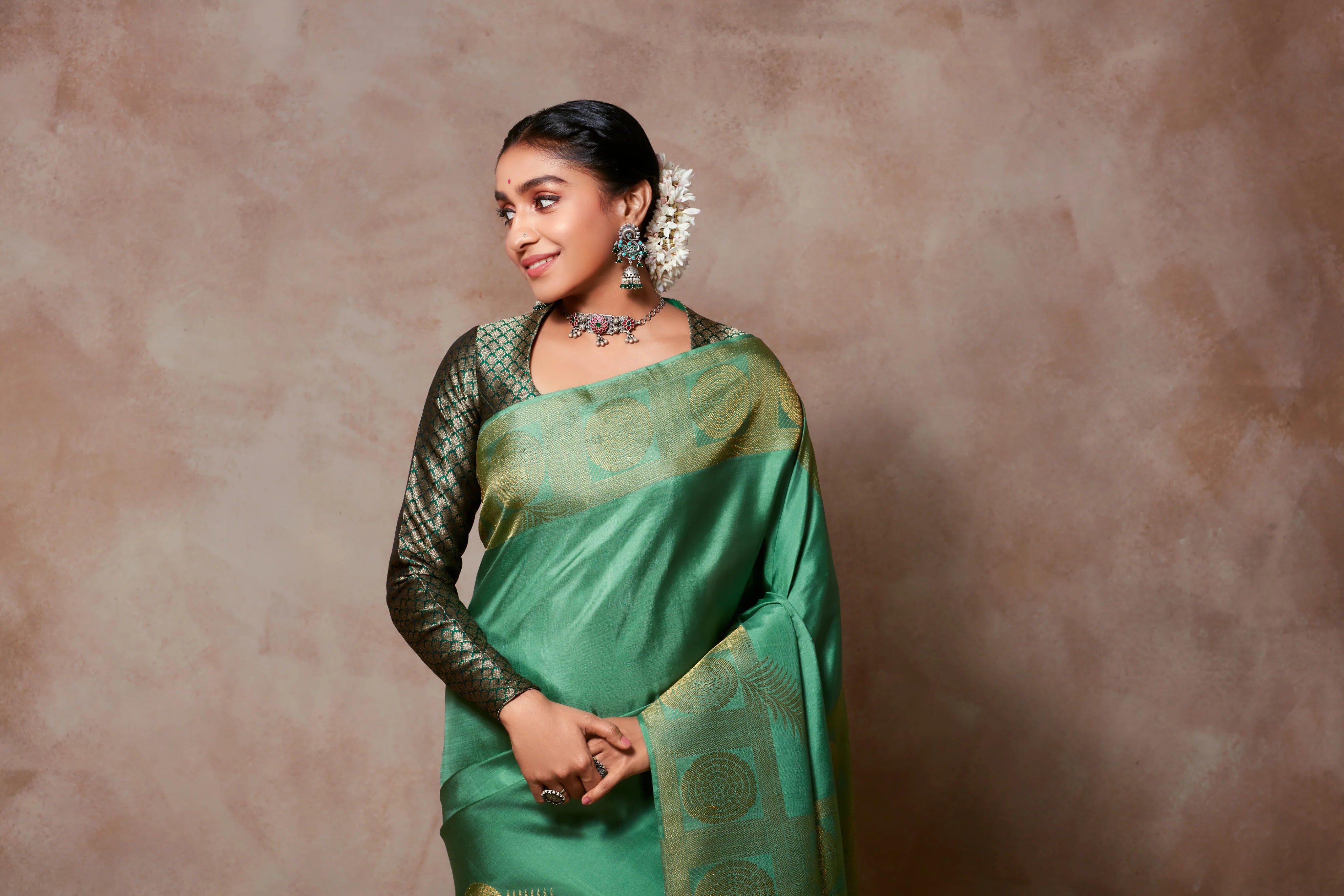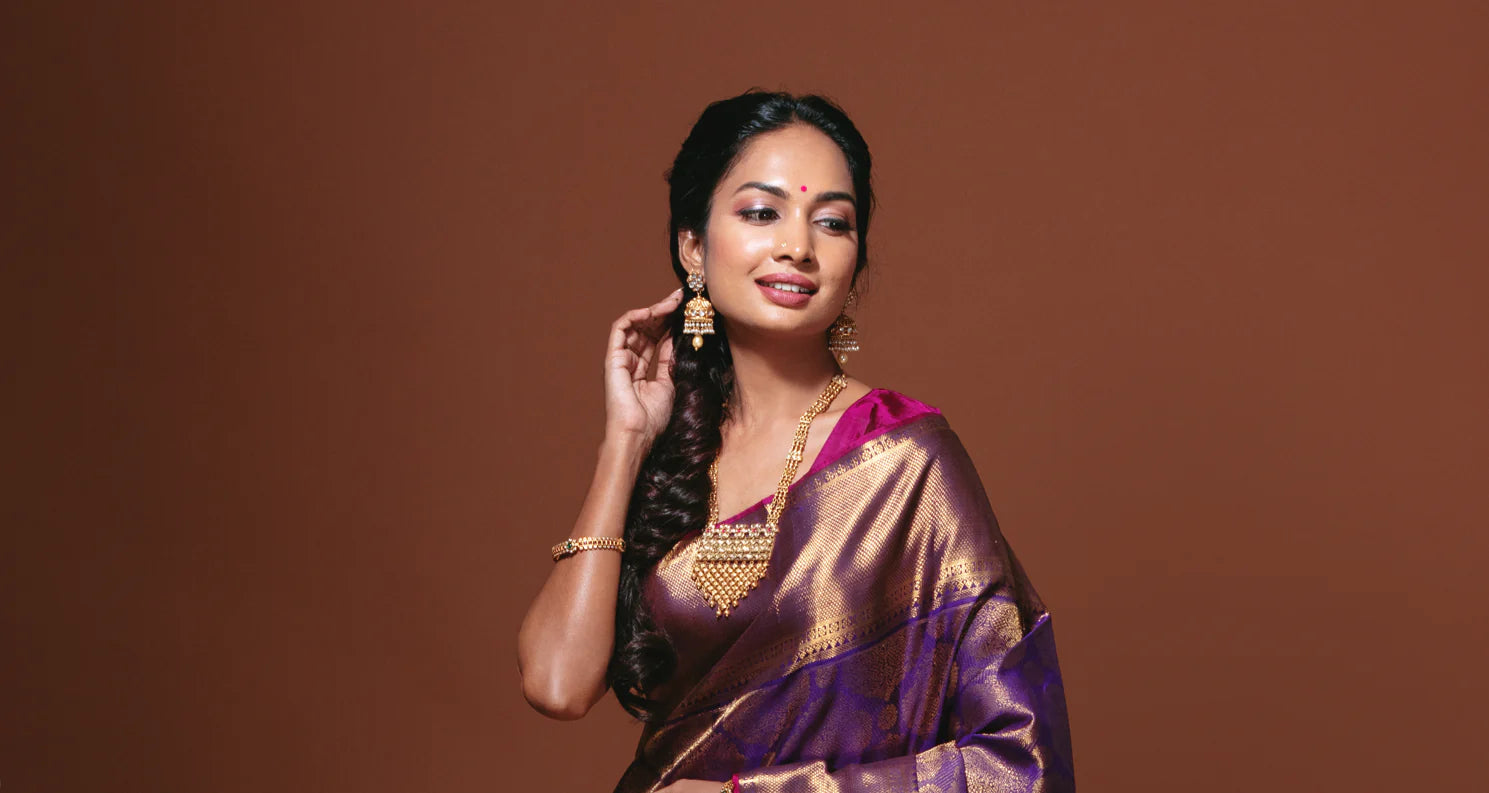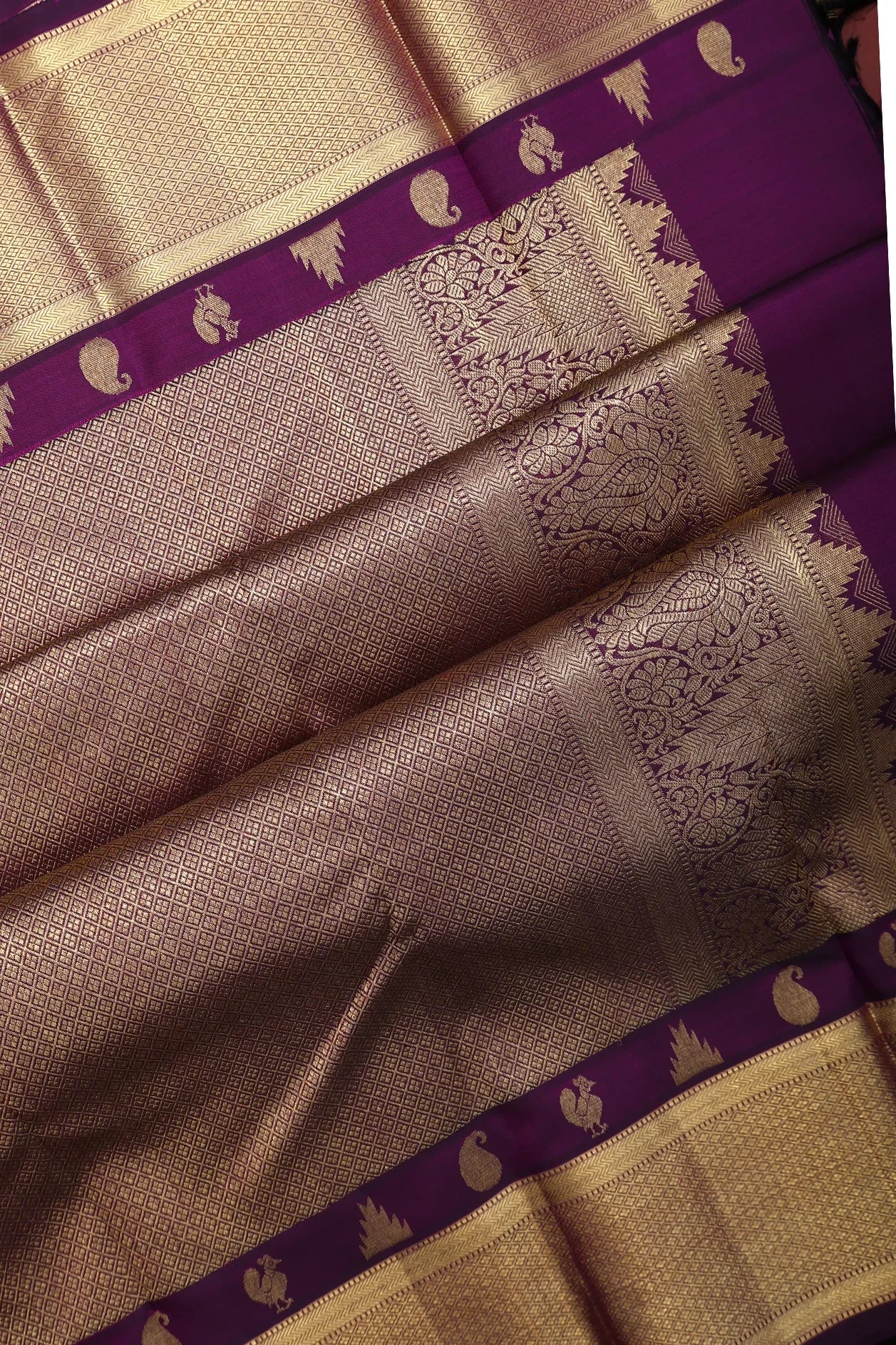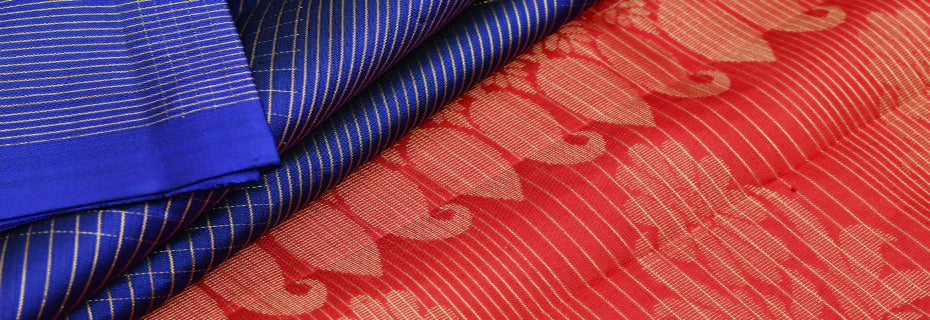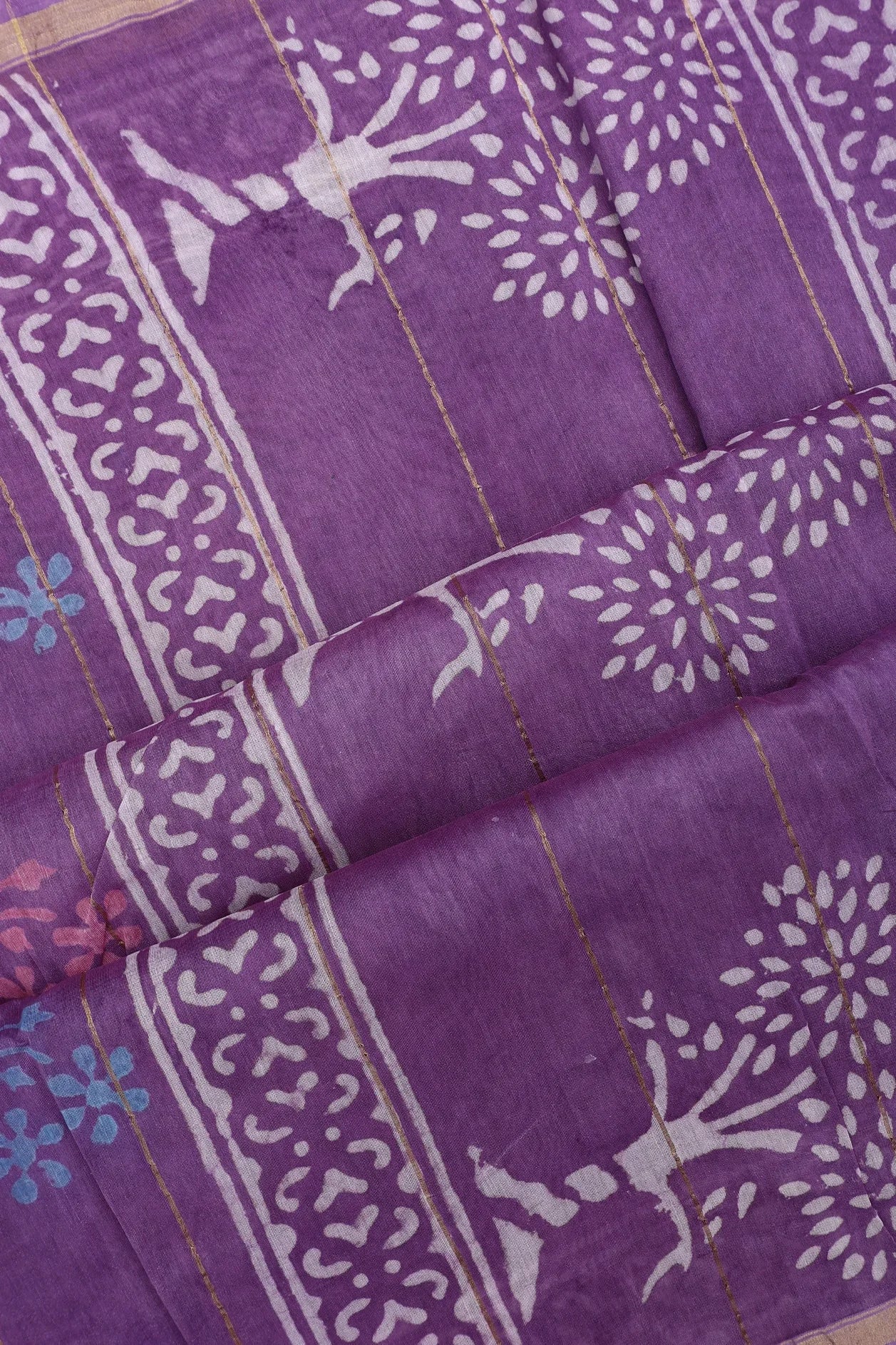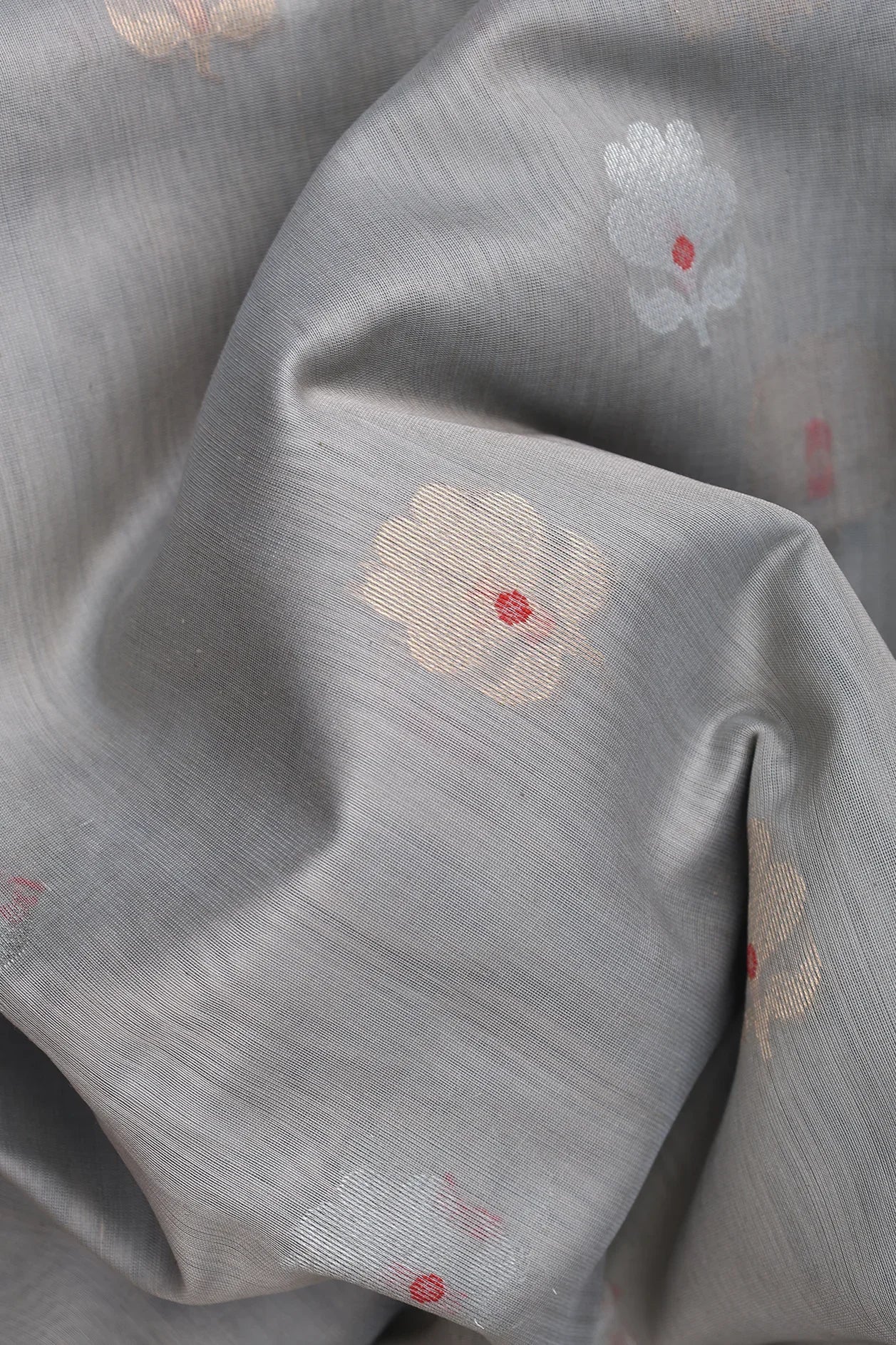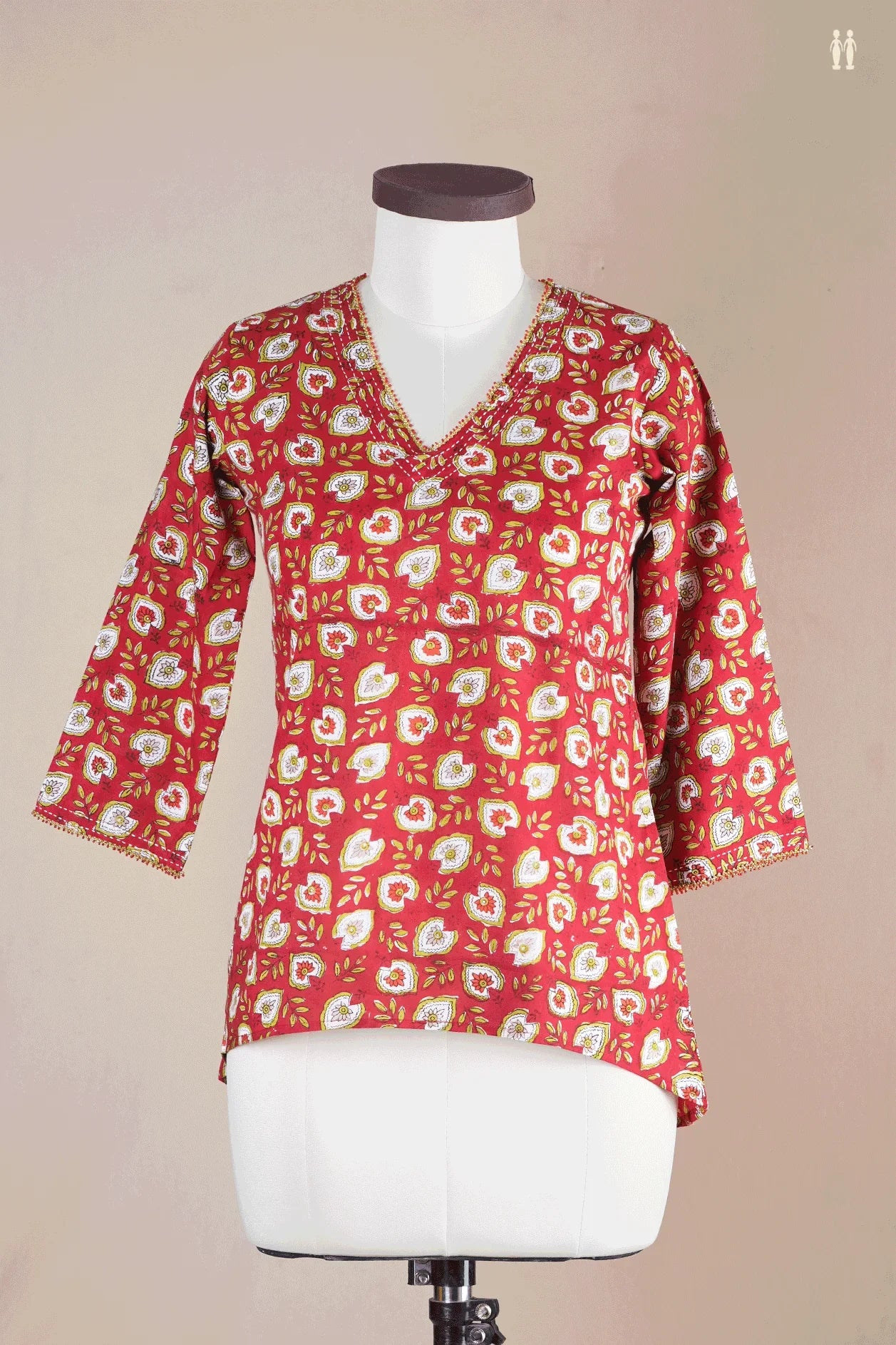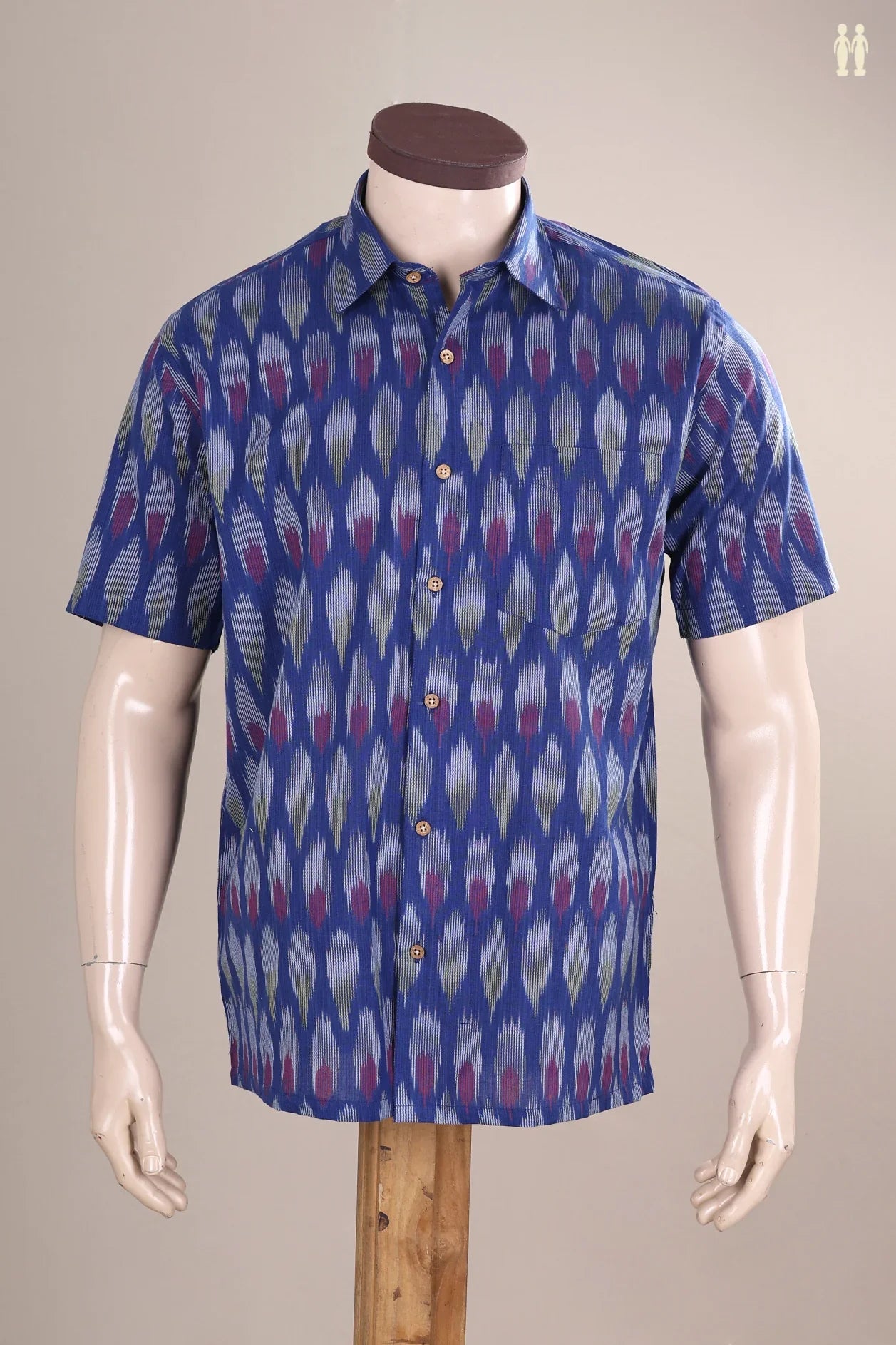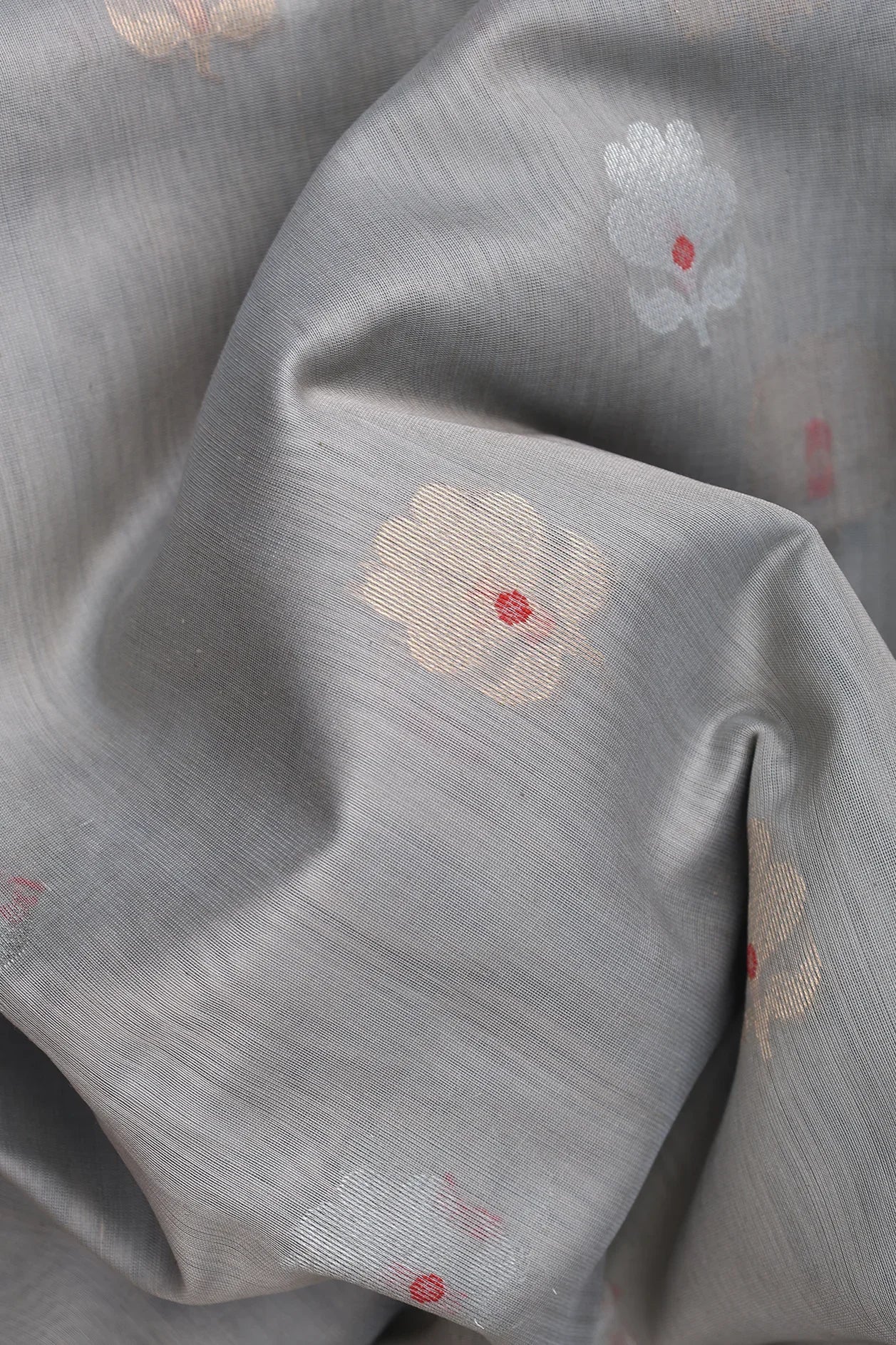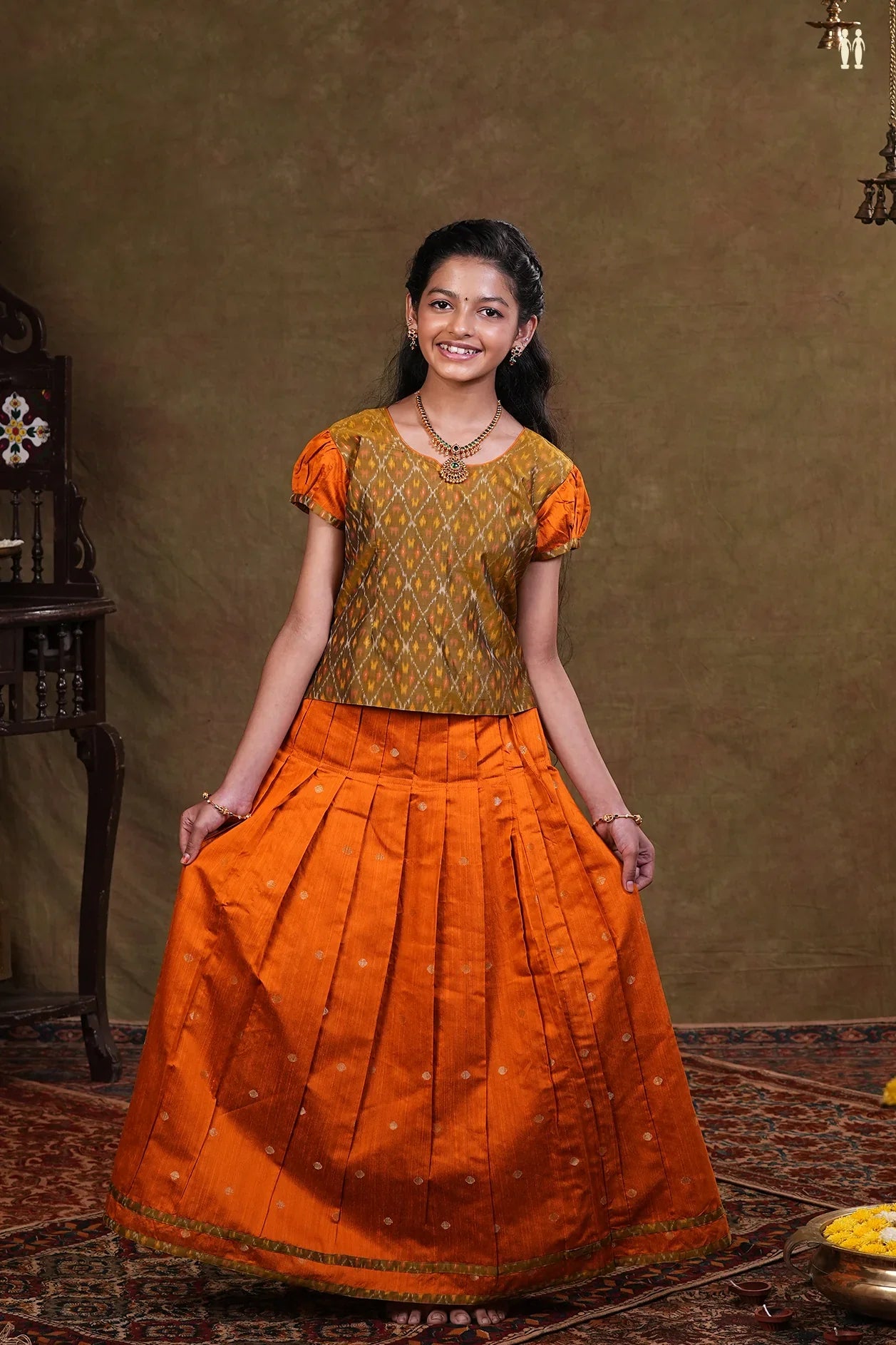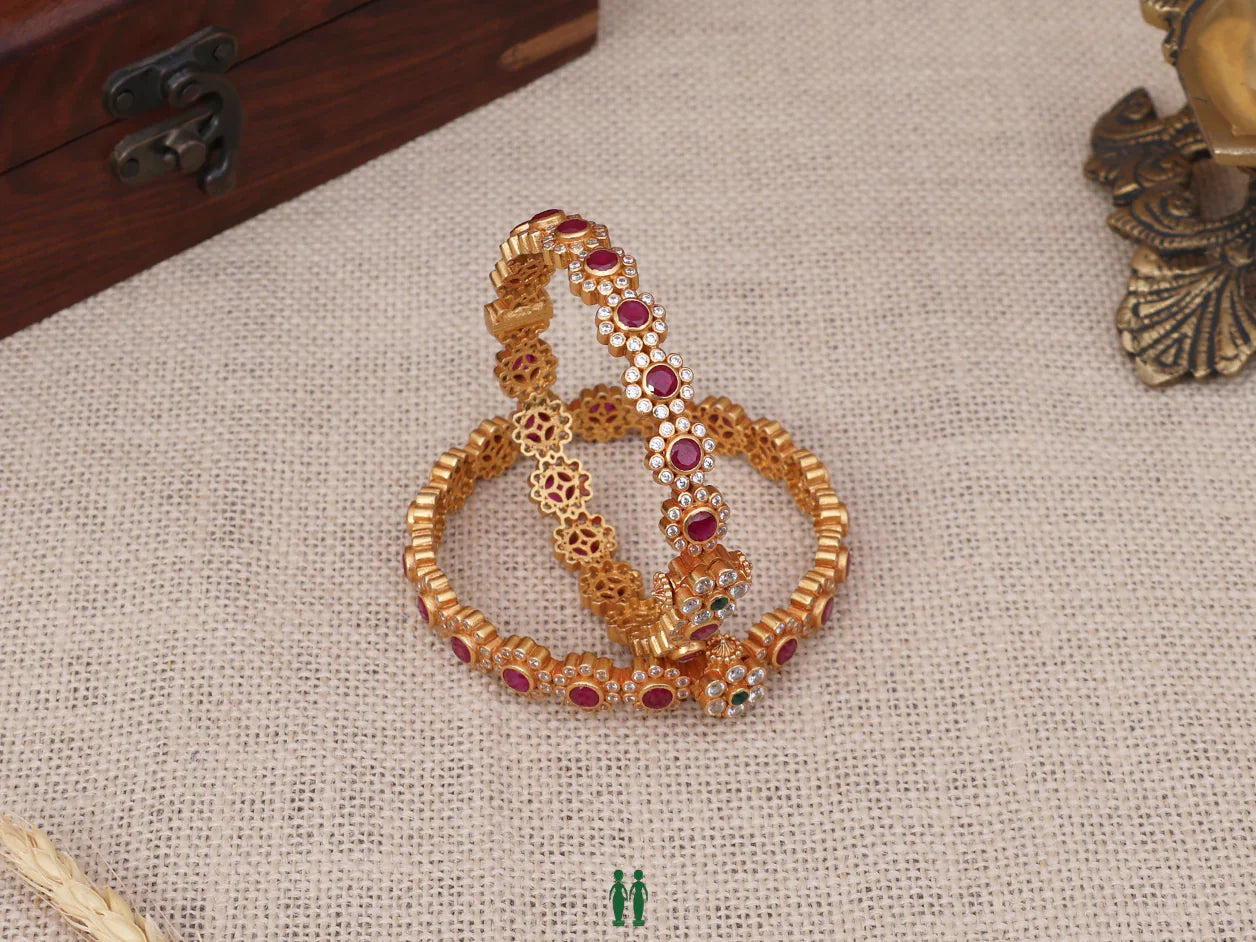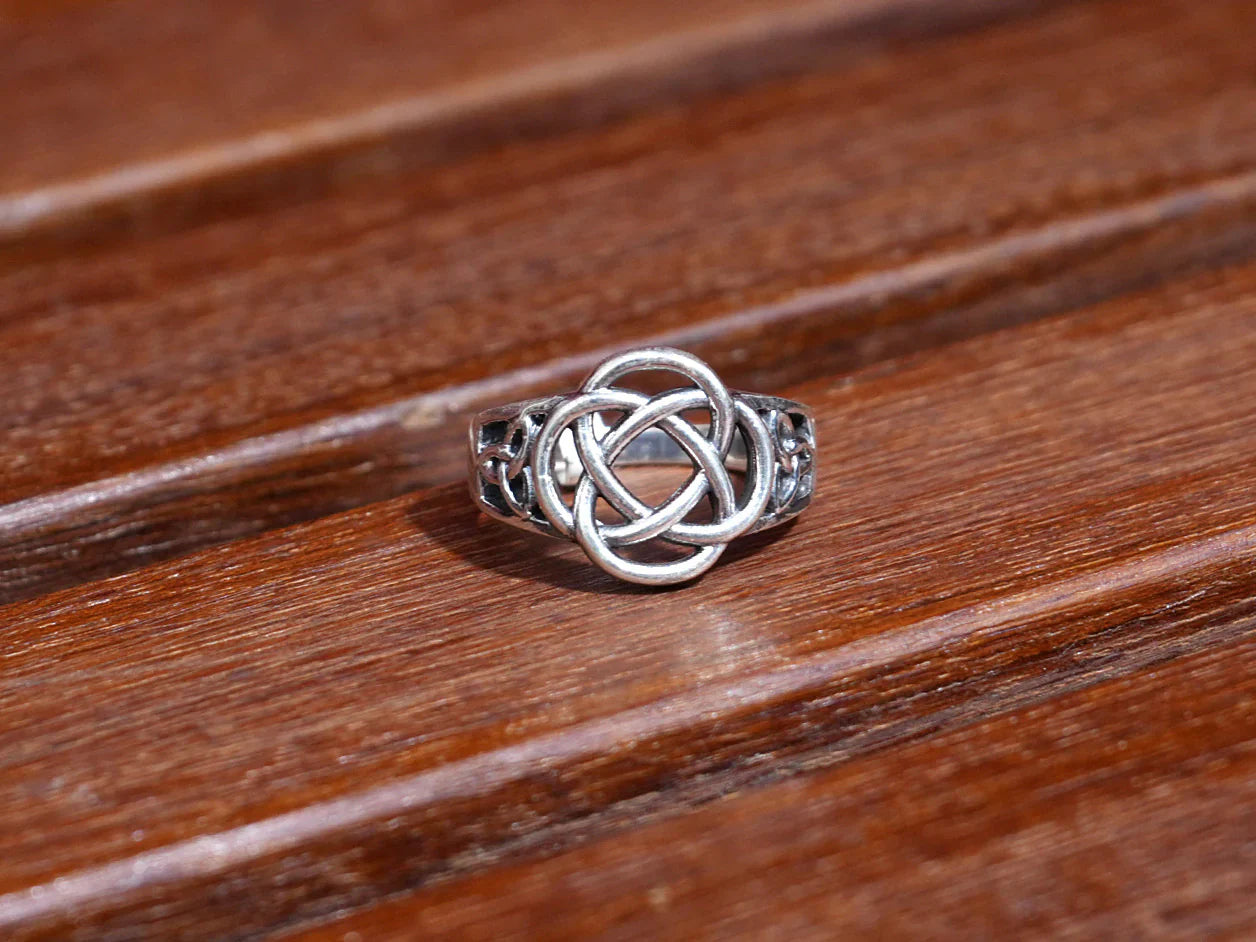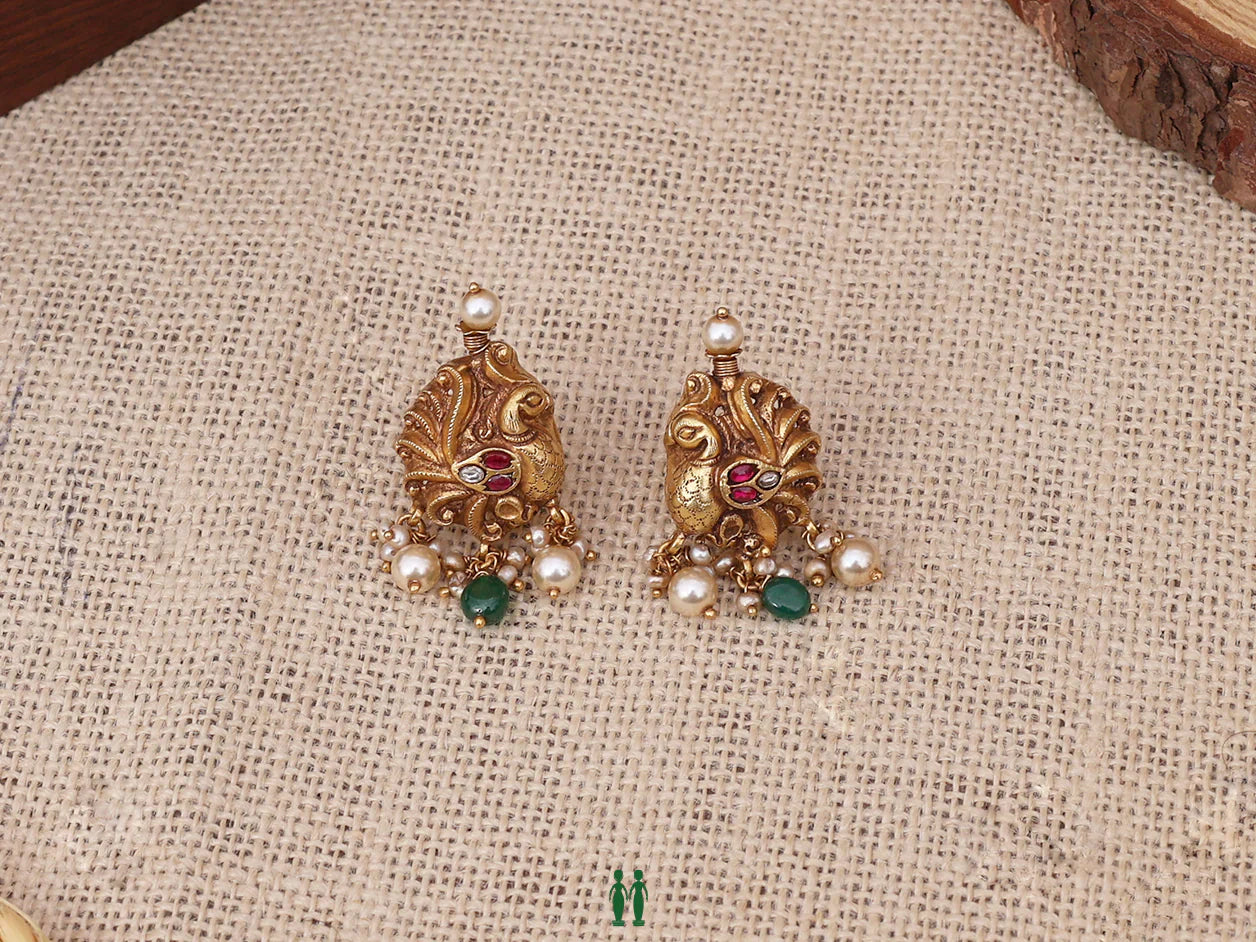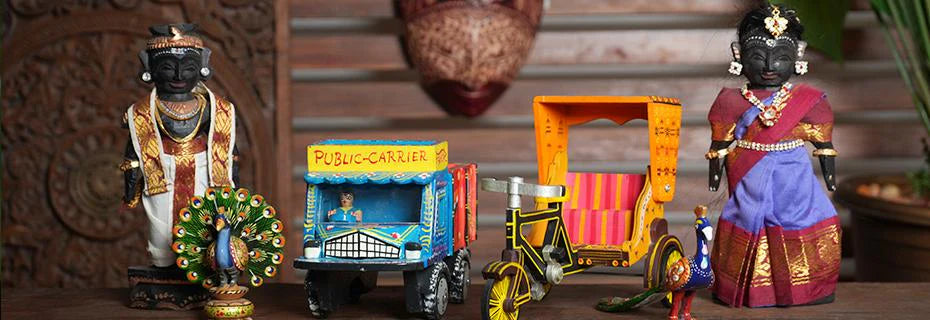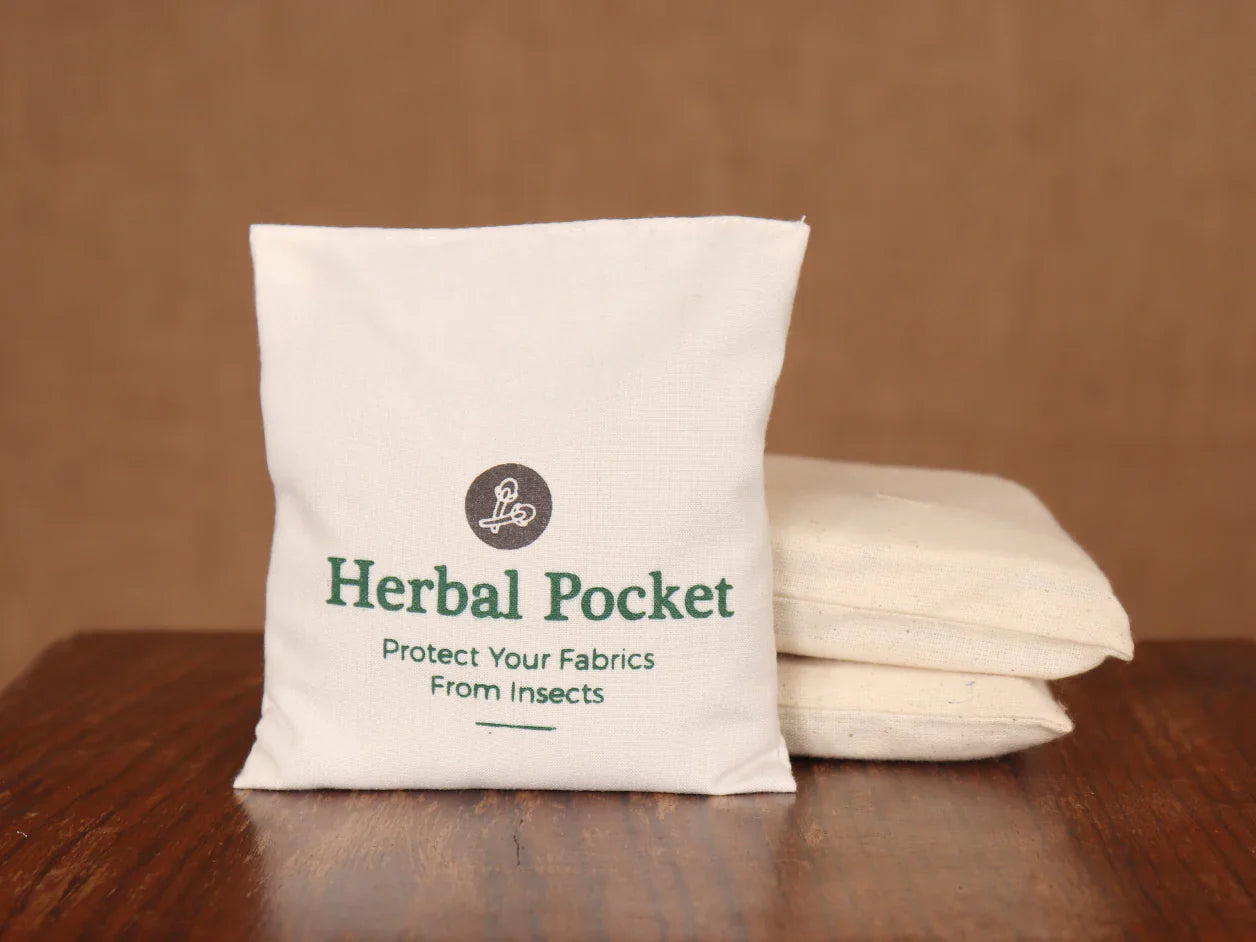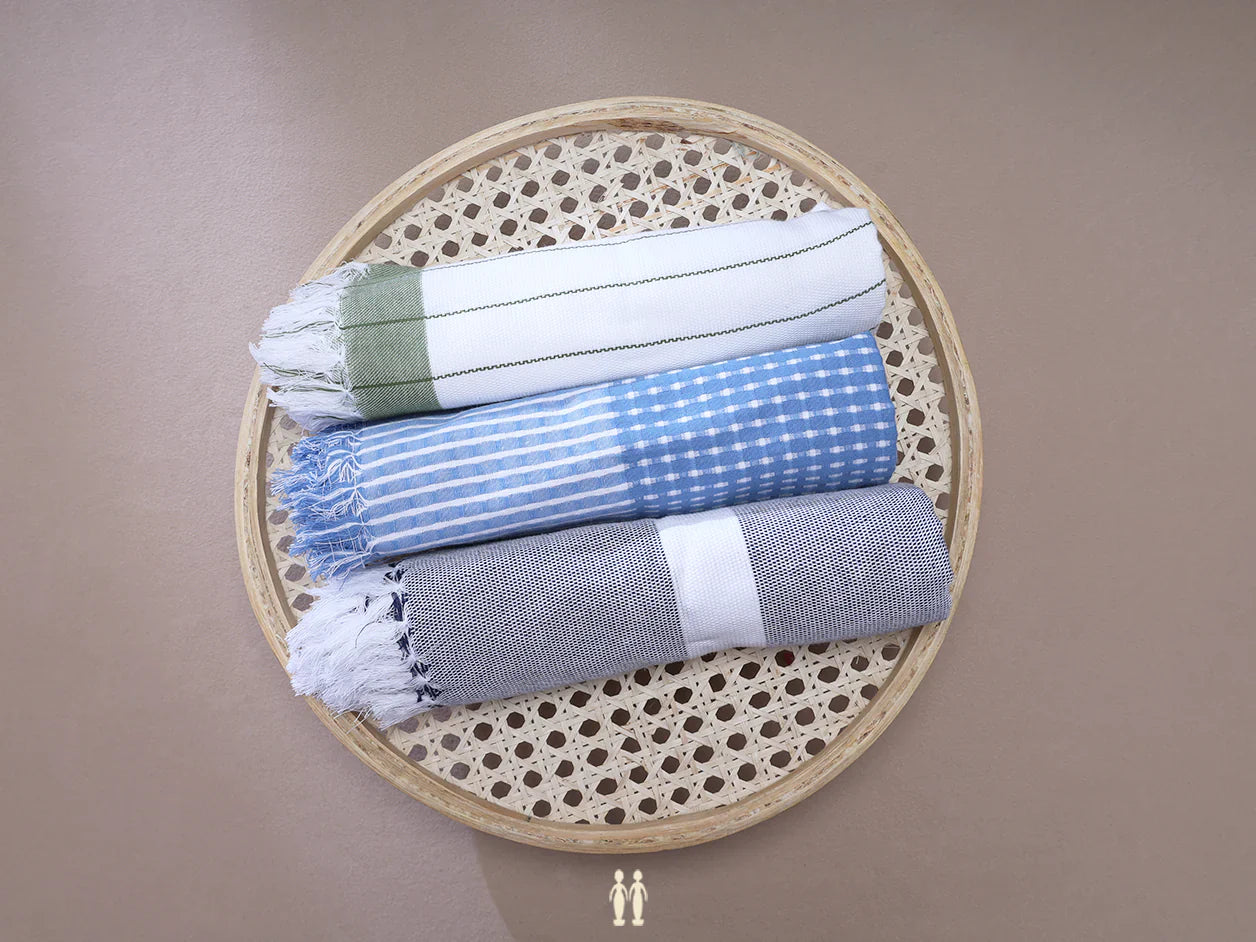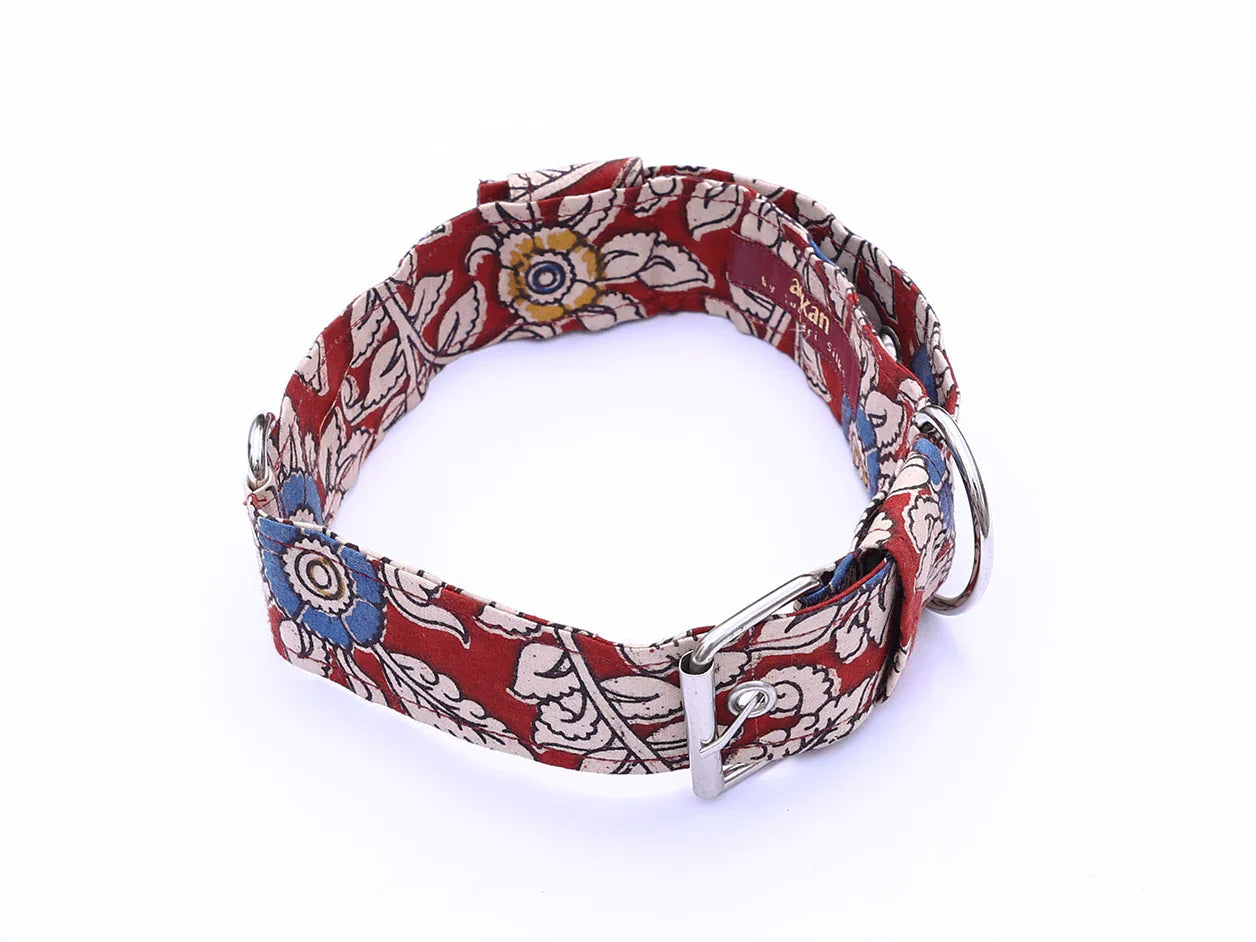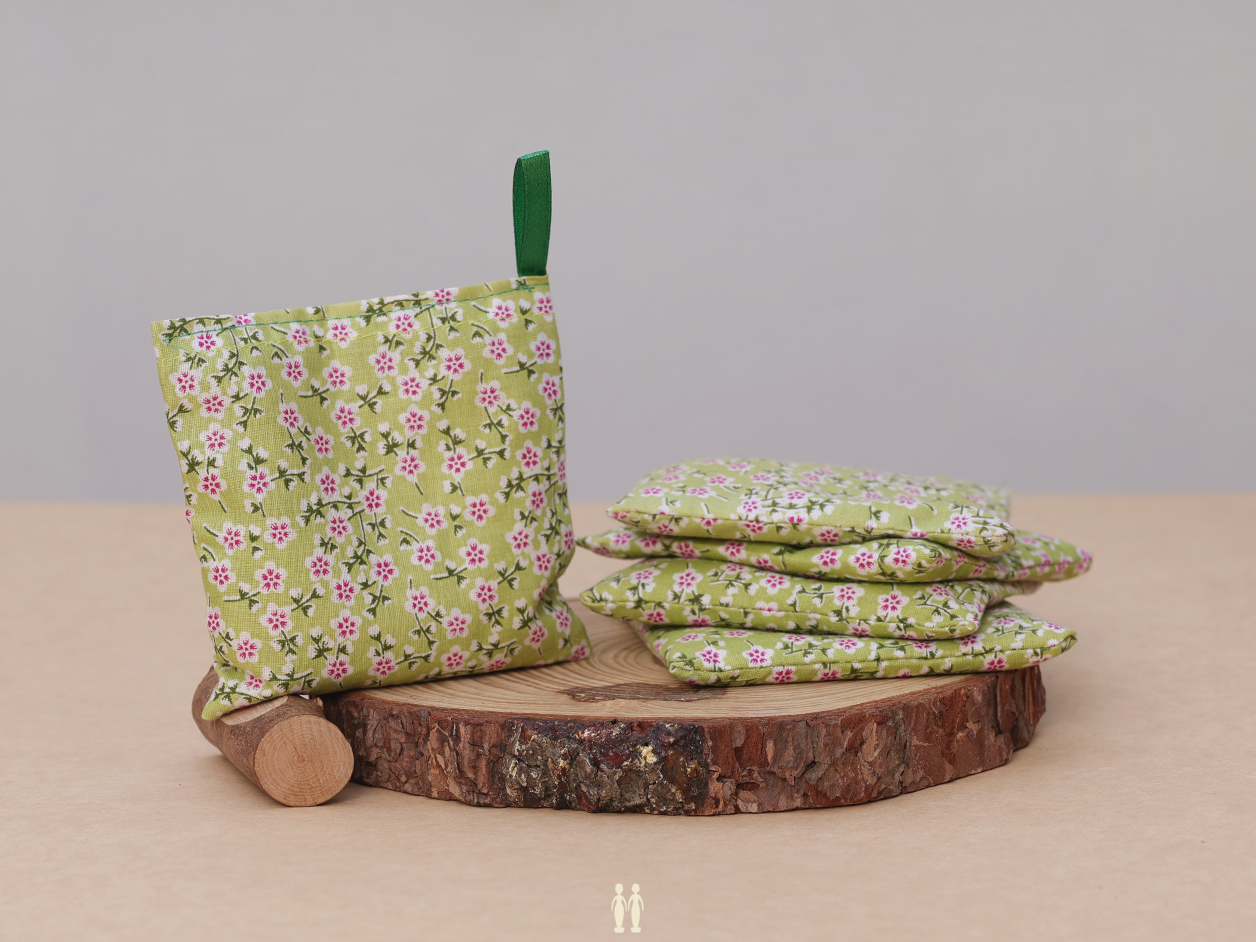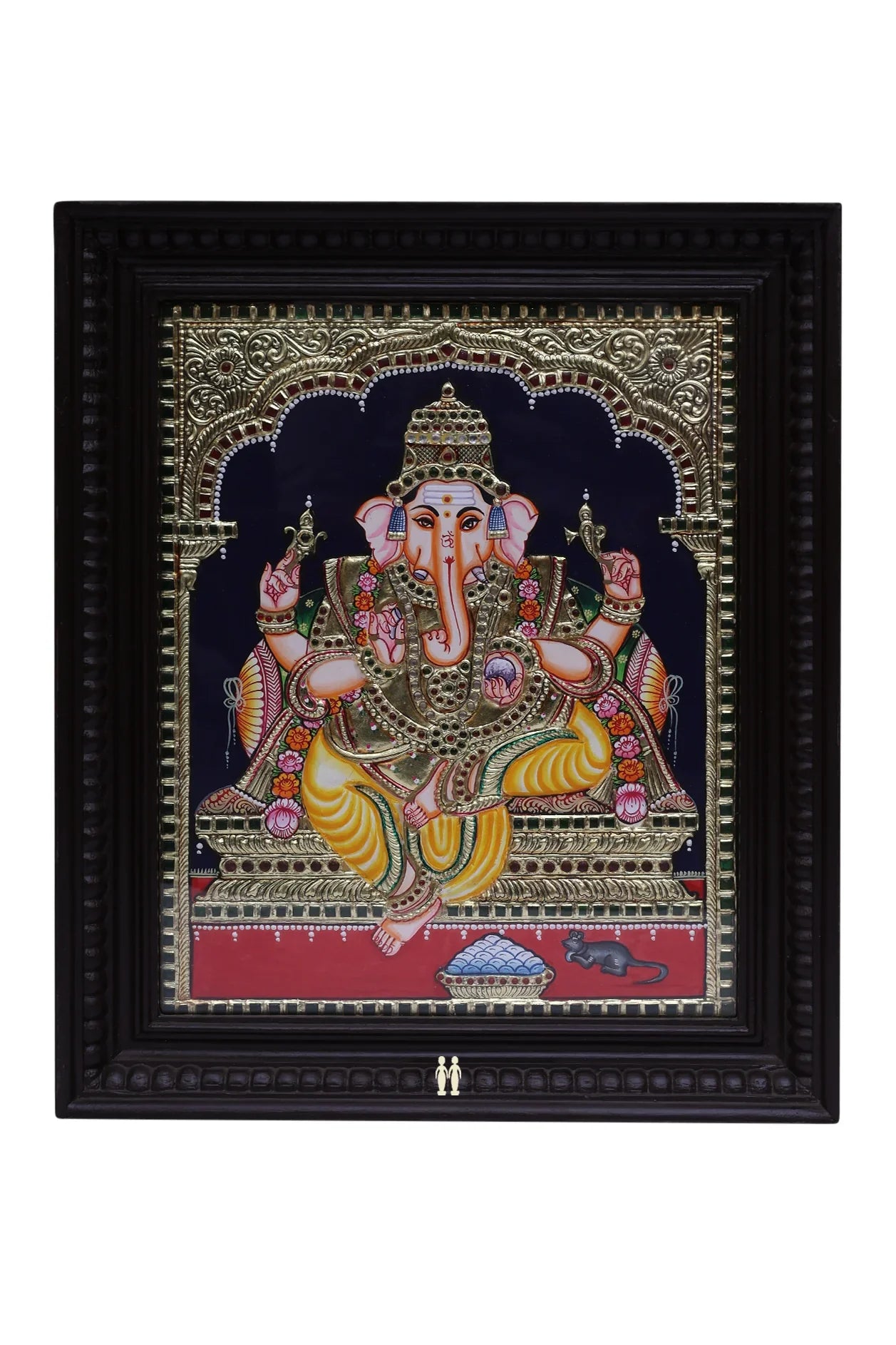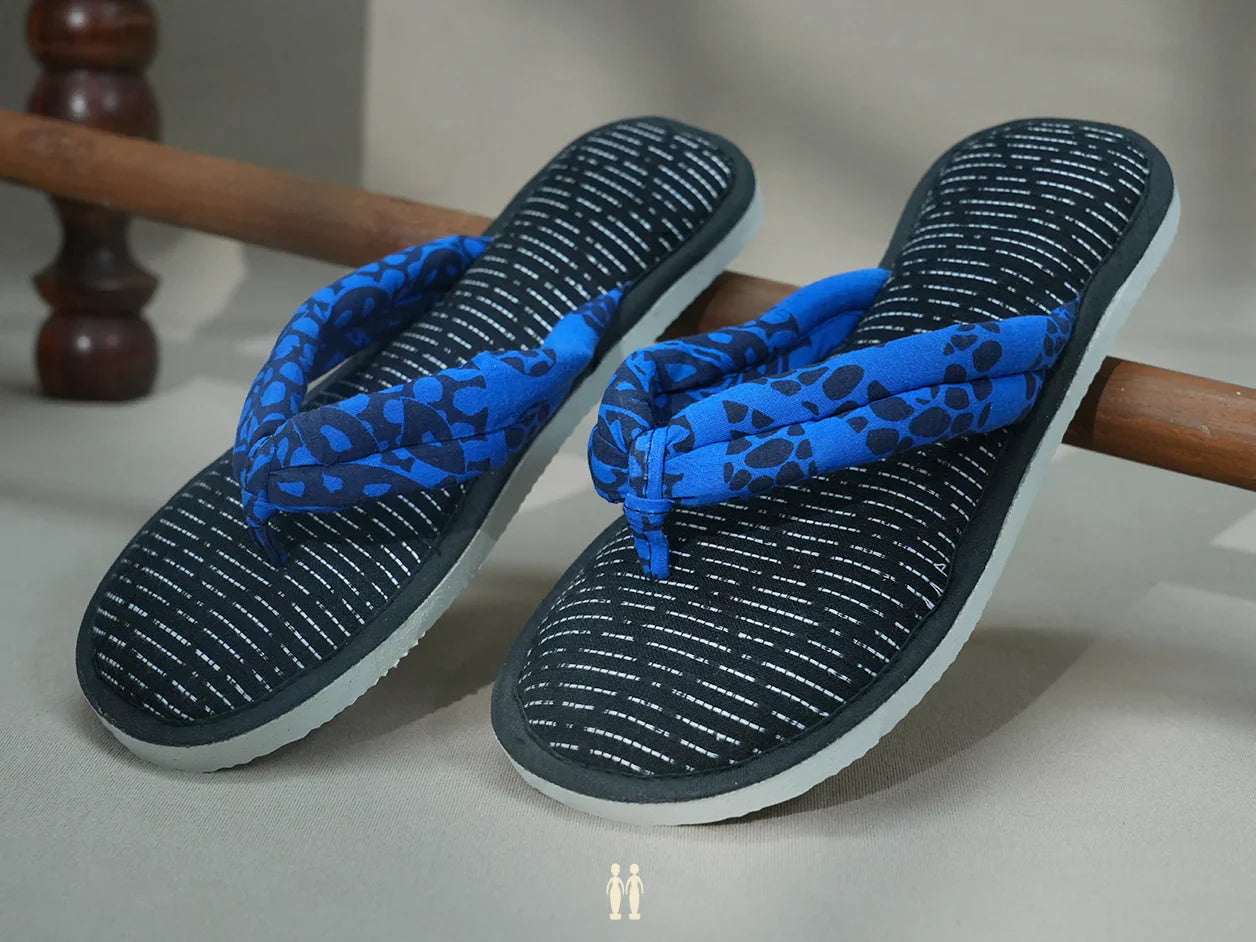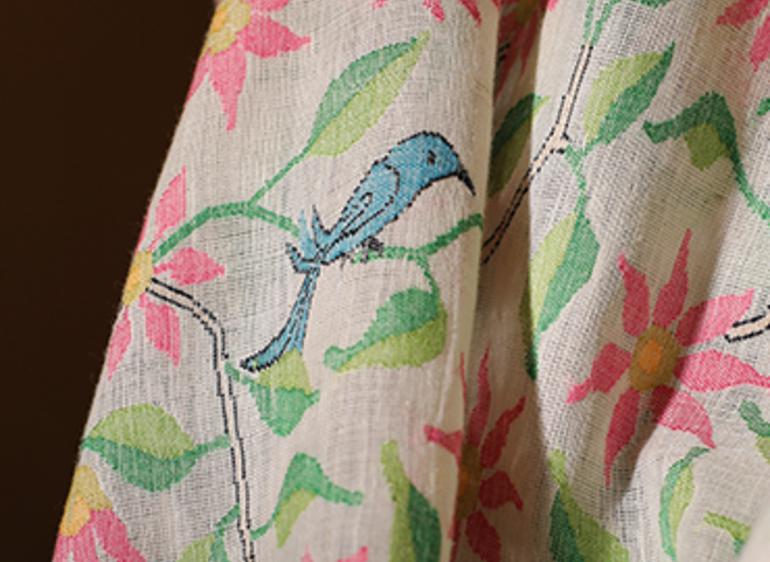Trending Products
CART
Cart is Empty!


Jamdani
One of the lightest and finest hand spun, handwoven cotton fabrics is Muslin. And the supplementary weft-work woven into this finest fabric is called as Jamdani.
Jamdani is a traditional craft linked to the state of West Bengal and also present-day Bangladesh. The Jamdanis made in West Bengal resemble the traditional designs made in Dhaka.
Jamdani weaving is similar to other supplementary-weft handloom weaving techniques, wherein small shuttles of threads are passed through the yarn to make the Jamdani designs by hand.

During olden days, two weavers used to sit alongside at the loom and make this interlacing by threads. The entire work was done by hands using a fine bamboo stick. The designs for the Jamdani would be drawn on a graph paper and placed underneath the warp. Remarkably, the designs are never sketched or outlined on the parent fabric.
Patterns and Influence
The dominant feature of Jamdani is its exquisite design element woven into perfection into a gauzy fabric. It is so fine that it is mistaken for embroidery.
The patterns and motifs of Jamdani are mostly floral and geometric and believed to have a strong Persian influence. Later on, this art form had great patronage from Mughals under whom Muslin and Jamdani reached unprecedented standards of excellence.

Traditionally, a Jamdani was essentially made in white, off-white or grey colours, almost appearing like a shadow on Muslins. But now they are made with various colours.
The traditional Jamdani weaving community consisted of a majority of Muslin weavers. Since it was forbidden in Islam to depict human figures, the weavers confined mostly to geometric and floral buttis.
This exquisite art form disappeared with the decline of the Mughals. Currently Jacquard machines are used to replace this handcraft to reduce labour and cost.
A handmade Jamdani carries so much information about human history and interactions between various cultures and is a must in every closet.


One of the lightest and finest hand spun, handwoven cotton fabrics is Muslin. And the supplementary weft-work woven into this finest fabric is called as Jamdani.
Jamdani is a traditional craft linked to the state of West Bengal and also present-day Bangladesh. The Jamdanis made in West Bengal resemble the traditional designs made in Dhaka.
Jamdani weaving is similar to other supplementary-weft handloom weaving techniques, wherein small shuttles of threads are passed through the yarn to make the Jamdani designs by hand.

During olden days, two weavers used to sit alongside at the loom and make this interlacing by threads. The entire work was done by hands using a fine bamboo stick. The designs for the Jamdani would be drawn on a graph paper and placed underneath the warp. Remarkably, the designs are never sketched or outlined on the parent fabric.
Patterns and Influence
The dominant feature of Jamdani is its exquisite design element woven into perfection into a gauzy fabric. It is so fine that it is mistaken for embroidery.
The patterns and motifs of Jamdani are mostly floral and geometric and believed to have a strong Persian influence. Later on, this art form had great patronage from Mughals under whom Muslin and Jamdani reached unprecedented standards of excellence.

Traditionally, a Jamdani was essentially made in white, off-white or grey colours, almost appearing like a shadow on Muslins. But now they are made with various colours.
The traditional Jamdani weaving community consisted of a majority of Muslin weavers. Since it was forbidden in Islam to depict human figures, the weavers confined mostly to geometric and floral buttis.
This exquisite art form disappeared with the decline of the Mughals. Currently Jacquard machines are used to replace this handcraft to reduce labour and cost.
A handmade Jamdani carries so much information about human history and interactions between various cultures and is a must in every closet.
Our Famous Articles

Our Famous Articles
Marappachi bommai
Marapachi Bommai: Heirlooms of Heritage In many South Indian homes,...
Your Ultimate Summer Wardrobe Destination
At Sundari Silks, we believe that the essence of summer...
Threads of Love: A Collection for Her & Him
What is the Meaning of Love? Love is found in...


GET ON THE LIST
Perks include 5% off your first online order at Sundari Silks. Be the first to know about new collections, store launches, sales and much more!





























